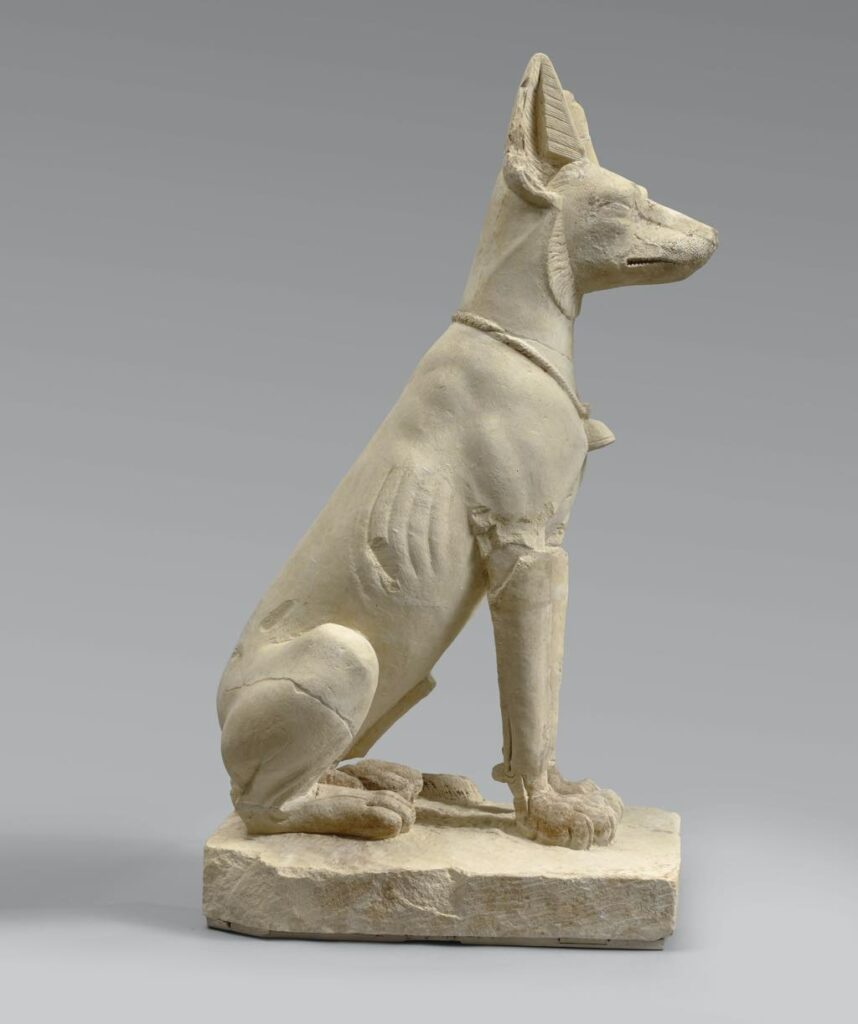
All the major fine-arts museums in the world, and many smaller ones, have departments devoted to Egypt. One of the best is that of the Louvre, in small part thanks to the spoils Napoleon brought back from the country after his failed military campaign there (the British seized most of the antiquities obtained by the French, which explains why the British Museum has possession of the Rosetta Stone). The Louvre’s collection is based mainly on the French royal collection and the acquisition of private collections.

The museum has just finished a three-year renovation of the first three rooms of the department of Egyptian antiquities, greatly improving the introduction to this complex world for visitors, who are now greeted by a formidable guardian: the spectacular “Asyut Dog” (332-30 BCE or 30 BCE-395), a large limestone statue of what may be a dog, a wolf or a golden jackal – the latter is the most likely, according to one of the department’s experts, and they may have been domesticated at the time. Other mysteries remain about this noble creature, which has just been restored: does it represent a god or a temple guardian?
In the same room is another restored treasure, the pink granite “Senusret Stela” (1901-1866 BCE), bearing two images of the vizier Senusret along with hieroglyphics expressing the defunct’s reverence for the gods and enumerating his offerings to them.
For visitors, the most valuable change is the placement of the “Dictionary of the Gods” at the beginning of the department. This display describes in French and English and in alphabetical order 60 gods of the Egyptian pantheon, with figurines illustrating each. It’s an indispensable guide to the complicated and often confusing world of Egyptian divinities, many of which can take on more than one form and have multiple functions. The goddess Hathor, for example, has many different roles and manifestations, as a cow, a woman with a cow’s head or horns, a snake, a tree or a lioness.
A timeline of the Egyptian kingdoms will also help visitors comprehend what they are about to see in the museum’s Egyptian rooms.

Finally, the department’s star exhibit, the chapel of the mastaba (tomb with sloping sides and a flat roof) of Akhethotep (c. 2400 BCE), a high official of the Egyptian Old Kingdom, has been restored and reconstructed to more closely resemble the original. Inside, visitors can closely examine the wealth of hieroglyphs covering the walls and decipher scenes of nature, farm life, banquets, dancing and processions, aided by illustrated descriptive panels.
These are all welcome changes that should spark new interest in the Egyptian treasures many visitors eschew in favor of a glimpse of Leonardo’s lady amid a mob of photo-snapping tourists.
Favorite